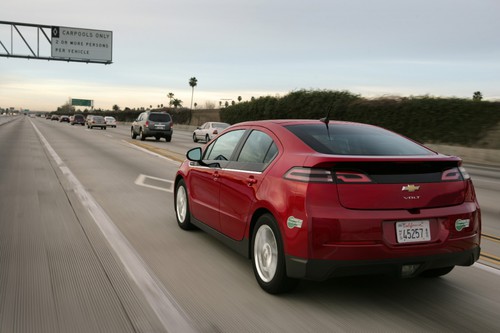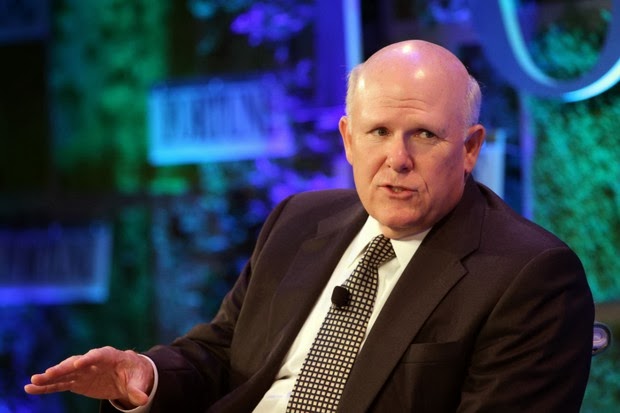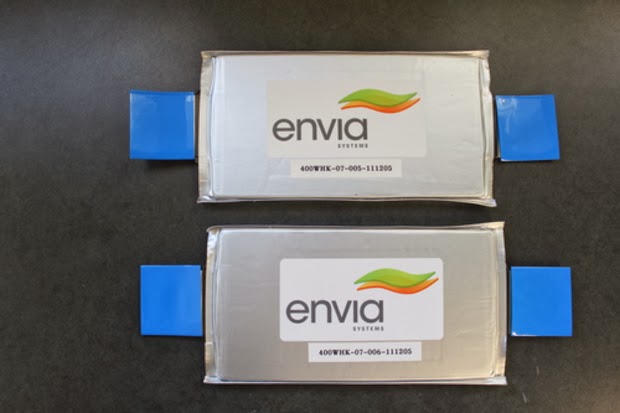Should GM kill the Chevy Volt? I thought we were past that phase, but maybe not, or maybe an article with that title on the Motley Fool is just a piece of link-bait![]() . In any case, GM is clearly playing the game of developing Volt 2.0 rather than killing the Volt. And that is what I suggested GM do with an article over a year ago, Should GM kill the Chevy Volt, stand pat, or create the Volt2?
. In any case, GM is clearly playing the game of developing Volt 2.0 rather than killing the Volt. And that is what I suggested GM do with an article over a year ago, Should GM kill the Chevy Volt, stand pat, or create the Volt2?![]()
At the time I wrote that Volt2 article, the anti-Volt frenzy was high partly because of the Presidential elections, and the way the Volt was being politically manipulated, and partly because of the politically motivated hype over the supposed fire risk of the Chevy Volt. Interestingly, that article was also written as a reaction to a Motley Fool article, leading me to think there’s a Volt and electric car basher at the Motley Fool.
Fact is that in 2012, GM came nowhere near the 45,000 Volt sales they’d projected, and in 2013 Volt sales are not only not improving but are on a declining trend-line. GM does need to do something to change this trend. And they need to do more than just reference the 3+ years of lackluster sales it took before the Toyota Prius took off to become the megahit it is today. The success of the Prius was not automatic, because Toyota had to have the stick-to-it-iveness to see it through to success.
One measure of success is whether a particular car is making a profit for the automaker. One of the memes is that GM is losing their shirt on the Volt and some even use bogus math to back up that idea by trying to show it cost $250,000 or whatever per Volt to develop the car![]() . The implied idea is that since GM is losing money on each Volt, that GM should just cut their losses and go fishing where the fish are biting.
. The implied idea is that since GM is losing money on each Volt, that GM should just cut their losses and go fishing where the fish are biting.
GM’s CEO Dan Akerson didn’t help the case for the Volt2 when he said this at a recent conference (wrote up more details of it here .. original transcript is on tech.fortune.cnn.com![]() ):
):
So, this will take out ‑‑ there have been 150 million miles driven on electricity now in the U.S. We’ve sold about 26-1/2 thousand of them. There’s nobody else who has done as many plug-in electric miles as we have. And the car is safe. It’s a five-star rated safety car. It’s shown durability and we’re losing money on every one of them. But, this is the first generation. So, the first year it outsold when Toyota came out with that ‑‑ what’s the name of that funny car they have?
While he did not help the overall cause any by saying this, the bigger point Akerson was making is the process of investing for a long-term payoff. GM isn’t following a game of trying something and run away if it fails coming out of the starting gate. Instead, the game is to plonk down some investment, learn from the initial product, and improve for the second version.
In other words, stick-to-it-iveness. BTW, Microsoft Windows didn’t take off until version 3.1, meaning there was a version 1, version 2 and even a version 3.0 before the one which took off.
My Volt2 piece went over three paths
- Dump the Volt – it’s losing money
- Stand pat with the existing Volt
- Create the Volt2
GM seemed at the time, and even more so now, to be working hard on the Volt2 path. The problem I wrote about at the time is also even more true now – the Volt is more expensive than other plug-in hybrids, meaning that Volt is being undercut by the other automakers. Most importantly is the Ford C-MAX Energi and Fusion Energi, both of which are fine cars, are plug-in hybrids, and have a lower price than the Volt.
Even more interesting are two things from Nissan and Tesla Motors. First, the 2013 Nissan Leaf has a much lower price. The starting price of the Leaf, $28,800, is a full $10,000 cheaper than the Volt. Second, the Tesla Model S appears to be outselling not only the Volt but also the Leaf. That’s rather surprising, because of the price level for the Model S (starts at $70k).
What is GM doing?
GM: Next Generation Volt Will Be $10,000 Cheaper to Build![]() – This was at the aforementioned conference, late April 2013, and Akerson talked a fair bit about what the Volt2 would be. In 2015-16, by the way. It’ll cost $7-10,000 less than today, it will weigh less, and it will have the ability to charge the battery pack while driving.
– This was at the aforementioned conference, late April 2013, and Akerson talked a fair bit about what the Volt2 would be. In 2015-16, by the way. It’ll cost $7-10,000 less than today, it will weigh less, and it will have the ability to charge the battery pack while driving.
Further, the Volt is sharing a lot of technology with the Cadillac ELR. Further, GM plans to have sold a half million electrified vehicles by 2017.
GM’s Reuss promises Volt 2.0 will be thousands of dollars cheaper![]() – in Jan 2013, at the Automotive News World Congress, defended the Volt and talked about its future. Cheaper, better. He also talked about how Electric cars are not dead but are inevitable
– in Jan 2013, at the Automotive News World Congress, defended the Volt and talked about its future. Cheaper, better. He also talked about how Electric cars are not dead but are inevitable![]() . Reuss said “We’re talking about a transformation here. And transformation takes time. It takes a long time to change an industry, to change habits, and to change a way of life.” And that “I believe, and we at GM believe that the public will accept and embrace electric vehicles; some people already have.” He pointed to technology advances that are coming which will “offer comparable performance at comparable prices,” such as “an affordable electric car that offers 300 miles of range with all the comfort and utility of a conventional vehicle”
. Reuss said “We’re talking about a transformation here. And transformation takes time. It takes a long time to change an industry, to change habits, and to change a way of life.” And that “I believe, and we at GM believe that the public will accept and embrace electric vehicles; some people already have.” He pointed to technology advances that are coming which will “offer comparable performance at comparable prices,” such as “an affordable electric car that offers 300 miles of range with all the comfort and utility of a conventional vehicle”
GM accelerating electric vehicle technology development, in China![]() – In Nov. 2012, Jon Lauckner, GM Chief Technology Officer, vice president of Global
– In Nov. 2012, Jon Lauckner, GM Chief Technology Officer, vice president of Global
Research & Development, and president of GM Ventures, talked at the
FISITA 2012 World Automotive Congress in Beijing about GM’s research and development into advanced electric vehicle development. The context was in China, and GM’s role in China, but it also shows where GM is going globally – towards electrified vehicles.
“Greater adoption of electrified vehicles requires a greater breadth of
offerings; cost reductions in technology for more competitive pricing
compared to conventional vehicles; and, of course, more infrastructure
for convenient charging,” Lauckner said.
“We will apply innovative technologies to cell design and fabrication, test and validate advanced cell materials provided by suppliers, and ultimately integrate battery cells into future battery systems for our vehicles,” said Lauckner. “We believe the further development of lithium-ion battery technology is possible through improvements in cell chemistry, cell and pack design, and optimization of thermal management.” In other words, GM’s engineers are hard at work solving the technological hurdles to electric vehicle adoption.
For a run-down on GM’s R&D work in China, see my earlier posting …
GM’s Akerson promises 200 mile range electric car in a few years![]() – Several times over the last year, GM’s executives have talked about the impending 200 mile range electric car. They haven’t given a precise time-frame, nor what technology would be behind it. I read Lauckner’s speech as also supporting this idea.
– Several times over the last year, GM’s executives have talked about the impending 200 mile range electric car. They haven’t given a precise time-frame, nor what technology would be behind it. I read Lauckner’s speech as also supporting this idea.
Envia Systems battery breakthrough for affordable 300 mile range electric cars![]() – It isn’t openly acknowledged, but it is believed that GM is working with Envia Systems to design an improved lithium-ion technology. What Envia has announced is battery technology with over twice the energy density and 1/4th the cost of current lithium-ion batteries.
– It isn’t openly acknowledged, but it is believed that GM is working with Envia Systems to design an improved lithium-ion technology. What Envia has announced is battery technology with over twice the energy density and 1/4th the cost of current lithium-ion batteries.
The result is a battery that stores 400 watt-hours of electricity per kilogram, compared to the 100-200 watt-hours/kilogram for todays lithium-ion batteries. Envia says its battery cell costs could be as low as $125 per kilowatt-hour. It’s difficult to get accurate prices automakers pay for batteries, but it’s thought to be in the neighborhood of $5-600 per kilowatt-hour. Together this means Envia has achieved a breakthrough of over twice the energy density of todays batteries, at 1/4 or less the cost.
Why is Envia important? It’s because GM Ventures has invested in Envia Systems, and Envia has licensed technology that has also been licensed by LG Chem (GM’s battery supplier for the Volt).
- Highway design could decrease death and injury risk, if “we” chose smarter designs - March 28, 2015
- GM really did trademark “range anxiety”, only later to abandon that mark - March 25, 2015
- US Government releases new regulations on hydraulic fracturing, that some call “toothless” - March 20, 2015
- Tesla Motors magic pill to solve range anxiety doesn’t quite instill range confidence - March 19, 2015
- Update on Galena IL oil train – 21 cars involved, which were the supposedly safer CP1232 design - March 7, 2015
- Another oil bomb train – why are they shipping crude oil by train? – Symptoms of fossil fuel addiction - March 6, 2015
- Chevron relinquishes fracking in Romania, as part of broader pull-out from Eastern European fracking operations - February 22, 2015
- Answer anti- electric car articles with truth and pride – truth outshines all distortions - February 19, 2015
- Apple taking big risk on developing a car? Please, Apple, don’t go there! - February 16, 2015
- Toyota, Nissan, Honda working on Japanese fuel cell infrastructure for Japanese government - February 12, 2015















